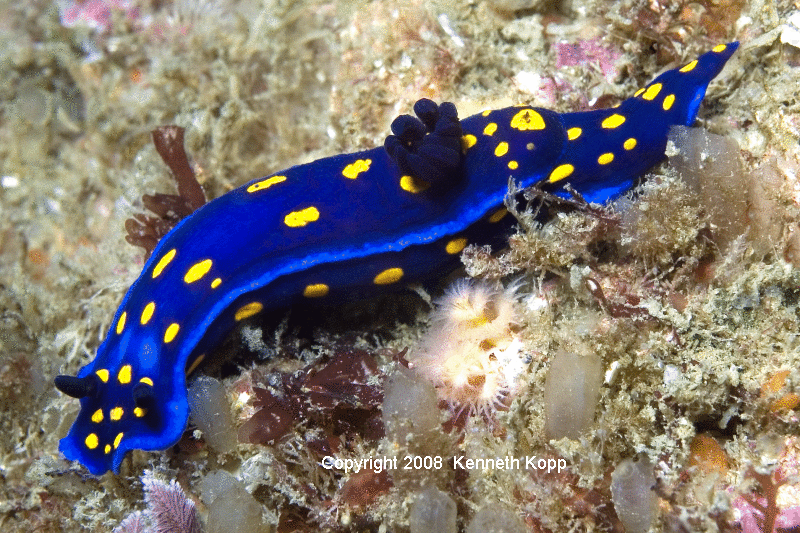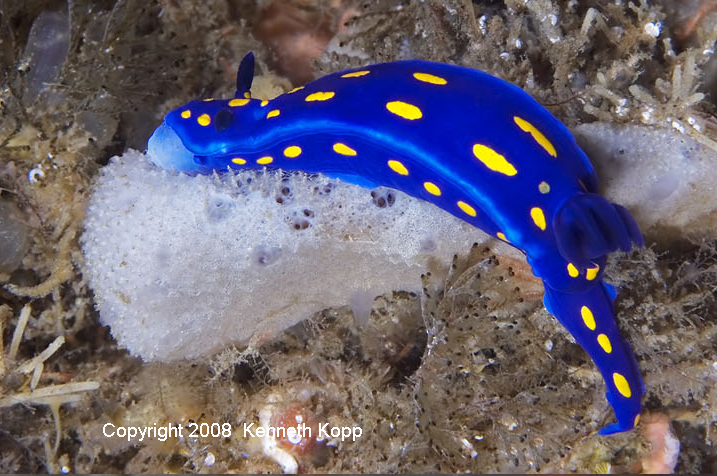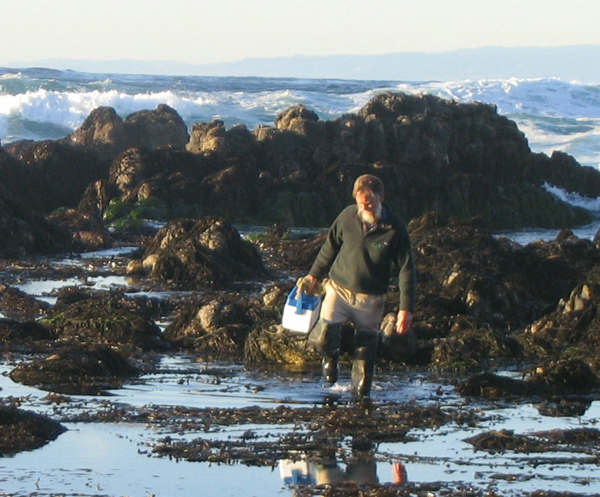 |
Felimare californiensis
Image courtesy of Kenneth KoppPhoto taken at wreck of the Valiant, Avalon Bay, Catalina Island, circa March 2008
Felimare californiensis on prey sponge at Avalon Bay, Catalina Island
 |
Felimare californiensis (=Hypselodoris californiensis) is one of the most emblematic species of California nudibranchs. For additional photographs and information on the biology and range of this species see
BOW week 255 Hypselodoris californiensis and
week 358 Hypselodoris californiensis (revisited 03/24/03)
Many local divers and nudibranch aficionados have noticed that Felimare californiensis is a rare species in California and is now only consistently found at Santa Catalina Island. However, this wasn't always the case. A recent paper published by Goddard et al (2013) describes the former abundance and regional extinction of this species in southern California. Although search efforts for nudibranchs have increased during the last few decades, F. californiensis was last sighted on the mainland coast of California in 1980, and by 1984 was extinct in the region. Since reappearing in 2003 it has been regularly found only at Catalina Island. Throughout this time period the species has persisted in Mexico. |
We are now trying to understand the biology and genetics of this species in order to determine the conservation status of the Catalina populations, prevent further decline, and possibly re-introduce the species into the Southern California mainland and new Marine Protected Areas. We are therefore asking for your help. We are interested in any sightings, especially small individuals and animals from localities other than Catalina Island, including dates and locality information. We are also very interested in photos or videos of the animal feeding. Finally, if you have a collecting permit we would like to obtain small samples of mantle tissue from living specimens for genetic studies . We would like to preserve our State's name-bearing nudibranch for future generations of divers to enjoy.
Department of Biological Sciences
California State Polytechnic University
Pomona, CA, 91768
Mar., 2013
Send Angel email at aavaldes@csupomona.edu
Marine Science Institute
University of California
Santa Barbara, CA, 93106-6150
Mar., 2013
Send Jeff email at jeff.goddard@lifesci.ucsb.edu
WEBMASTER'S NOTES: Once again, kudos are in order for the Southern California Diving Community, whose vigilant watch of the underwater fauna off our coast have helped bring the plight of Felimare californiensis to the attention of Marine Scientists who are now attempting to analyze the causes of species decline and perhaps promote measures which will bring the species back from the brink of extinction. We just can't let Felimare californiensis join the rolls of what used to be! It's far too majestic to just disappear off the face of the earth!
Michael Miller
San Diego, Calif
Mar., 2013
Send Mike email at mdmiller@cts.com
Photo courtesy of Lise Goddard

|
